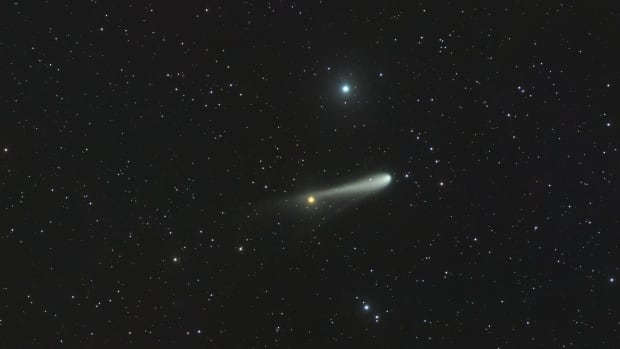- 2024 marks Colorado resident Billy Barr’s 50th year logging snowfall amounts in the Rocky Mountains.
- Barr’s data has continually helped scientists who work with the nearby mountainside lab.
- He said he hopes advancements in water forecasting tools will provide solutions for managing resources as the climate shifts.
Four miles from the nearest plowed road high in Colorado’s Rocky Mountains, a 73-year-old man with a billowing gray beard and two replaced hips trudged through his front yard to measure fresh snow that fell during one mid-March day.
Billy Barr first began recording snow and weather data more than 50 years ago as a freshly minted Rutgers University environmental science graduate in Gothic, Colorado, near part of the Colorado River’s headwaters.
Bored and looking to keep busy, he had rigged rudimentary equipment and each day had jotted the inches of fresh snow, just as he had logged gas station brands as a child on family road trips.
CLIMATE CHANGE THREATENS RIVER BASINS WORLDWIDE AS SNOWPACK DECLINES, STUDY FINDS
Unpaid but driven by compulsive curiosity and a preference for spending more than half the year on skis rather than on foot, Barr stayed here and kept measuring snowfall day after day, winter after winter.

Billy Barr holds his canister with newly fallen snow on March 13, 2024, in Gothic, Colorado. So-called “citizen scientists” like Barr have long played important roles in gathering data to help researchers better understand the environment. His once hand-recorded measurements have informed numerous scientific papers and helped calibrate aerial snow sensing tools. (AP Photo/Brittany Peterson)
His faithful measurements revealed something he never expected long ago: snow is arriving later and disappearing earlier as the world warms. That’s a concerning sign for millions of people in the drought-stricken Southwest who rely on mountain snowpack to slowly melt throughout spring and summer to provide a steady stream of water for cities, agriculture and ecosystems.
“Snow is a physical form of a water reservoir, and if there’s not enough of it, it’s gone,” Barr said.
So-called “citizen scientists” have long played roles in making observations about plants and counting wildlife to help researchers better understand the environment.
THE BEST SNOW-FILLED DESTINATIONS TO VISIT ACROSS THE GLOBE FOR WINTER ENTHUSIASTS
Barr is modest about his own contributions, although the once-handwritten snow data published on his website has informed numerous scientific papers and helped calibrate aerial snow sensing tools. And with each passing year, his data continues to grow.
“Anybody could do it,” said the self-deprecating bachelor with a softened Jersey accent. “Being socially inept made me so I could do it for 50 years, but anyone can sit there and watch something like that.”
Two winters ago, Barr’s legs started buckling with frustrating frequency as he’d ski mellow loops through spruce trees looking for animal tracks — another data point he collects. He feared it might be his last year in Gothic, a former mining town turned into a research facility owned by the Rocky Mountain Biological Laboratory, where he worked full time for decades and is now a part-time accountant.
“I was running out of time to live here,” he said. “That’s why I went through the hip replacements to prolong it.”
Two hip replacement surgeries provided an extended lease on high altitude living. Barr cross-country skied more this past December than he did the entire previous winter.
“Unless something else goes wrong, which it will, but unless it’s severe, I think I can last out here a while longer,” he said.
A lot could go wrong. As Barr sat on a bench beside at the research lab on an unseasonably warm March day, a heavy slab of snow slid off the roof and launched the bench forward, nearly causing him to fall.
Not all risks are avoidable, but some are. If the ski track is too icy, he’ll walk parallel in untracked snow to get better footing. He grows produce in a greenhouse attached to his home, and most of his non-perishable goods — stocked the previous autumn — are organic. He wears a mask when he’s around others indoors.
“I can’t get a respiratory disease at this altitude,” he said.
For Barr, longevity means more time for the quiet mountain lifestyle he enjoys from his rustic two-room house heated by passive solar and a wood stove. He uses a composting toilet and relies on solar panels to heat water, do laundry and enable his nightly movie viewing.
When he eventually retires from the mountains, Barr hopes to continue most of his long-running weather collection remotely.
He has been testing remote tools for five years, trying to calibrate them to his dated but reliable techniques. He figures it will take a few more years of testing before he’ll trust the new tools and, even then, fears equipment failure.
For now, he measures snow in his tried and true way:
Around 4 p.m., he hikes uphill from his home to a flat, square board painted white, and sticks a metal ruler into accumulated snow to measure its depth. Next he pushes a clear canister upside down into the snow, uses a sheet of metal to scrape off the rest of the snow, then slides the sheet under the canister to help flip it over. He weighs the snow, subtracting the canister’s weight, which lets him calculate the water content.
So far, manual measuring remains the best method, scientists say. Automated snow measurements introduce a degree of uncertainty such as how wind spreads snow unevenly across the landscape, explained Ben Pritchett, senior forecaster at the Colorado Avalanche Information Center.
“Nothing replaces observing snow in person to understand how it’s changing,” Pritchett said.
But Barr’s data collection has always been unpaid volunteer work — and that complicates any succession plan when he eventually leaves his home in Gothic.
“If environmental science were funded like the way we fund cancer research or other efforts, we would absolutely continue that research and data collection,” said Ian Billick, executive director for the Rocky Mountain Biological Laboratory. “It would be super valuable.”
The lab has winter caretakers who could ski the half mile to Barr’s home to manually measure new snow at the same site with his same method, but someone would still need to foot the bill for their time.
Barr is well aware that his humble weather station is just a snapshot of the Colorado River basin, and that satellites, lasers and computer models can now calculate how much snow falls basin-wide and predict resulting runoff. Yet local scientists say some of those models wouldn’t be as precise without his work.
Ian Breckheimer, an ecologist with the Rocky Mountain Biological Laboratory, measures snow from space using satellites. Given the distance, Breckheimer needed on-the-ground data to calibrate his model.
“Billy’s data provides that ground truth,” Breckheimer said. “We know that his data is right. So that means that we can compare all the things that we think we can see to the things that we know are right.”
CLICK HERE TO GET THE FOX NEWS APP
Between measuring the snow and noting animal sightings, Barr created a body of work that no one asked him to assemble and that hasn’t brought him a dime.
Although it’s helped inspire scientists who work with the nearby mountainside lab, Barr said he started measuring snowfall out of a simple desire to relate to the world around him. He felt out of place in the city and choked by social expectations.
“I didn’t fit into anything and it doesn’t make me a miscreant,” he said. “You have to look for what will work for you. And sometimes that means trying different things and going different places.”
Just as he engineered a lifestyle that bucks societal norms, Barr hopes the high-tech water forecasting tools scientists have today will lead to unconventional solutions for rationing the dwindling resource.
“It could lead to things like, well, we really can’t have green lawns in the middle of Arizona anymore, because that’s not a good use of the limited water resource,” Barr said. “And water is more precious than gold.”






